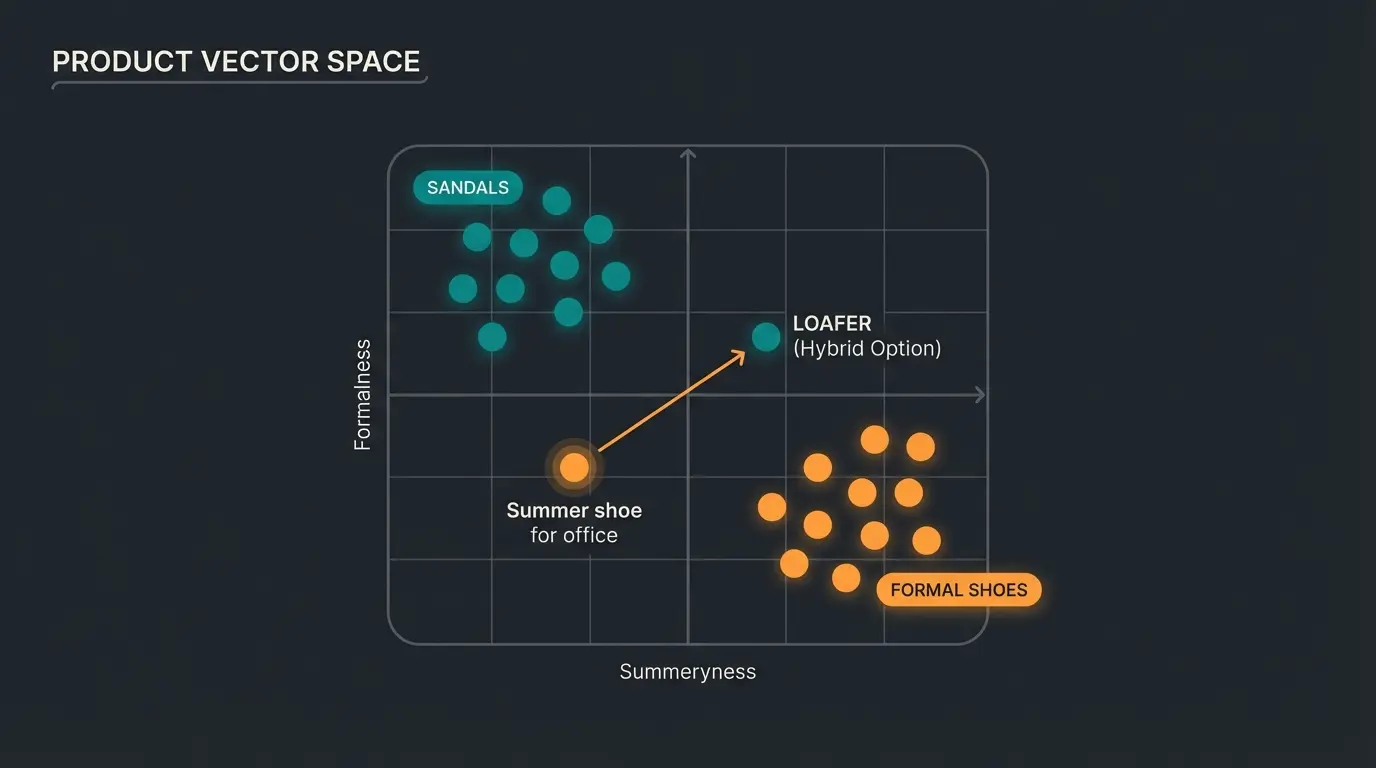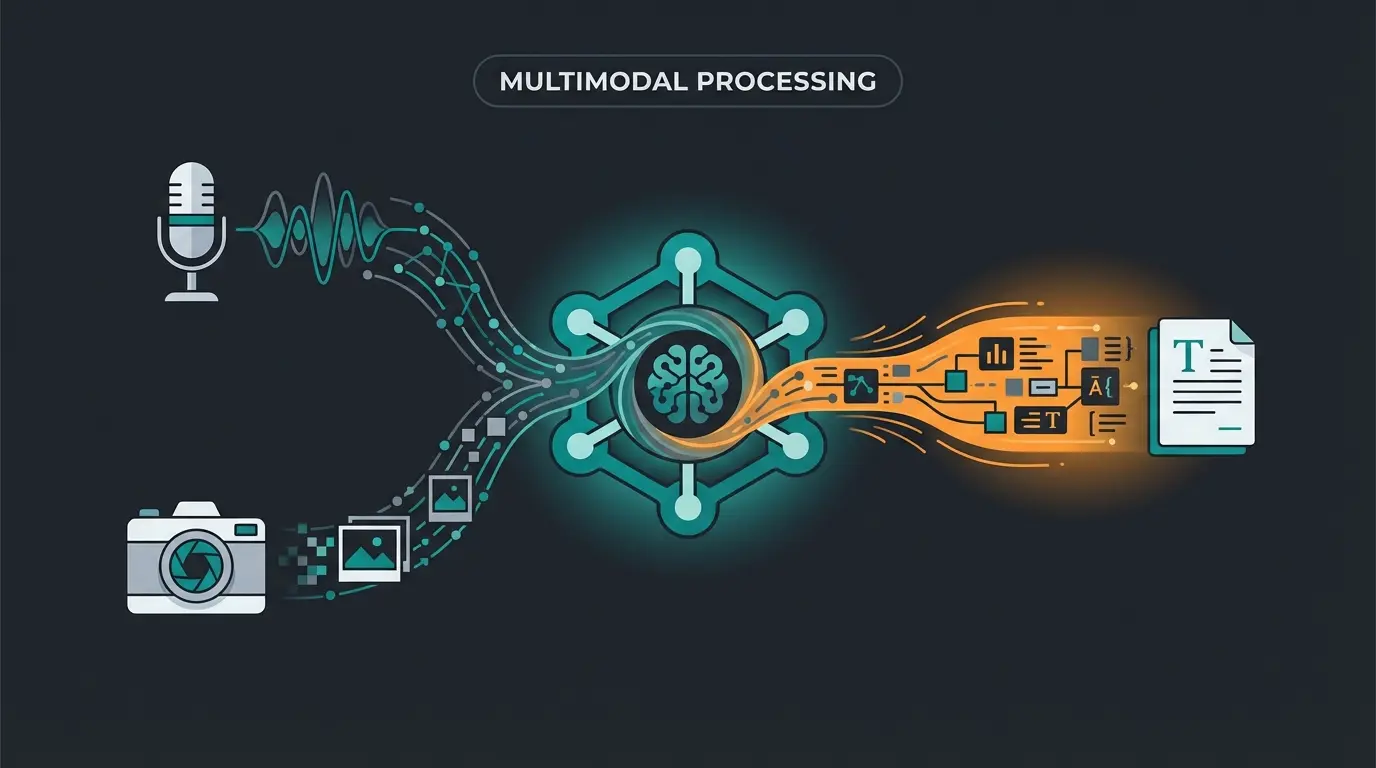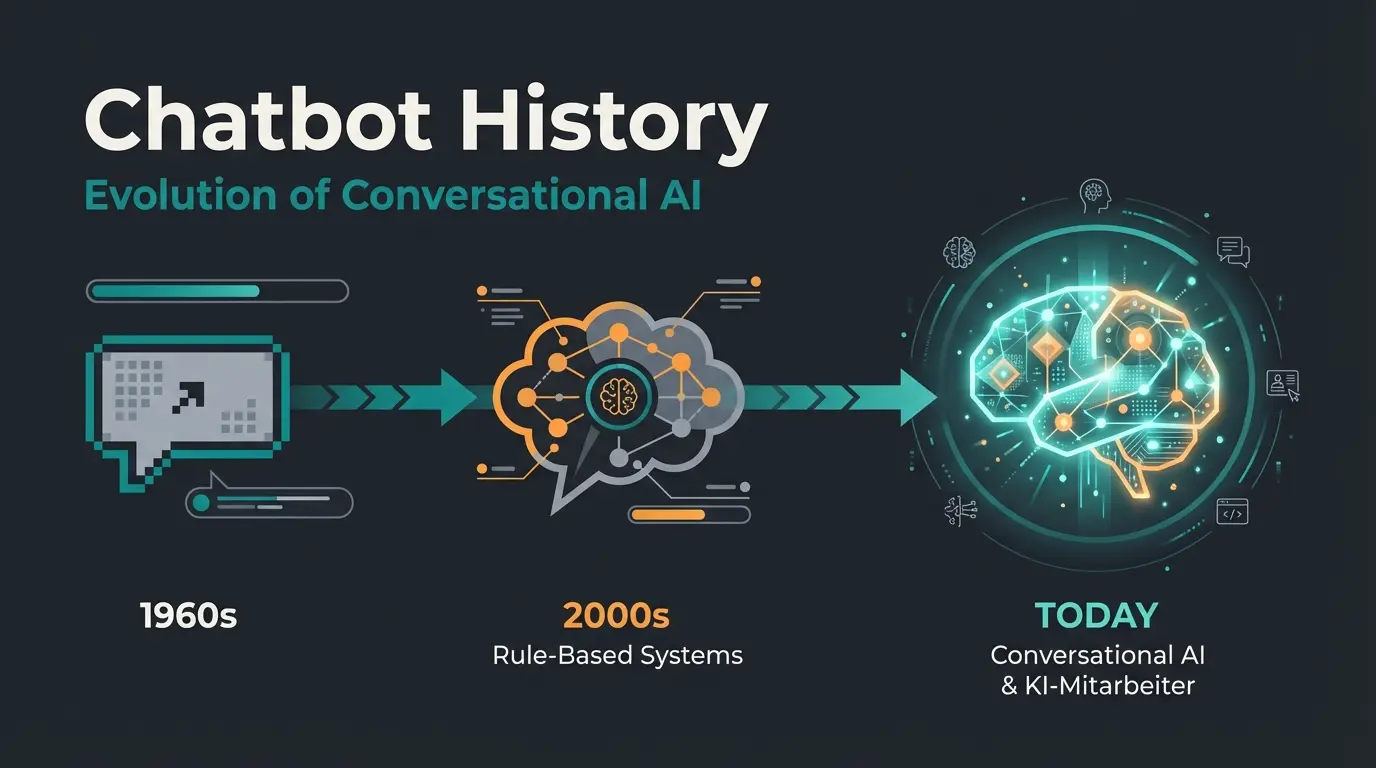Vector Databases & AI: The Key to Next-Gen Product Consultation
Discover how Vector Databases and AI are transforming e-commerce from static search to intelligent product consultation. Learn about Hybrid Search, RAG, and the future of sales.
Introduction: What is a Vector Database and its Importance for AI Applications
In the rapidly evolving world of artificial intelligence (AI), Vector Databases are playing an increasingly critical role. These specialized database systems are designed to efficiently store and process high-dimensional data points, known as vectors. They form the backbone of many modern AI applications, particularly in the field of AI-supported product consultation.
Vector databases differ from traditional relational databases in their ability to represent complex data structures—such as text, images, or audio files—in the form of numerical vectors. These vector representations allow AI systems to calculate similarities between data points quickly and precisely, which is of decisive importance for many applications.
The importance of vector databases for AI applications can be pinpointed to several key factors:
- Efficiency: They enable lightning-fast similarity searches in large datasets.
- Scalability: Vector databases can easily handle growing amounts of data.
- Flexibility: They support various types of unstructured data.
- Precision: Vector-based search often delivers more accurate results than traditional text searches.
In the context of product consultation, vector databases play a key role in personalizing recommendations. They enable AI systems to identify, from a multitude of products, those that best correspond to a customer's preferences and needs. This leads to a significant improvement in customer experience and the efficiency of e-commerce platforms.
Foundations of Vector Databases: Simply Explained
Definition and Functionality
Vector databases are specialized database systems designed to store and process high-dimensional vectors. A vector is essentially a mathematical representation of data as a series of numbers. These vectors can represent various types of information, from texts and images to complex object properties.
The functionality of vector databases is based on the principle of similarity search. Instead of finding exact matches, as is the case with traditional databases, vector databases search for the most similar data points based on proximity in multi-dimensional space. This is typically realized through algorithms like Approximate Nearest Neighbor (ANN), which efficiently determine the nearest neighbors.

Differences from Traditional Relational Databases
Vector databases differ from traditional relational databases in several essential points:
- Data Structure: Relational databases work with structured tables, while vector databases store multi-dimensional vectors.
- Query Methods: Instead of SQL queries, vector databases use similarity searches to efficiently index and search high-dimensional data.
- Scalability: Vector databases are better suited for processing large amounts of unstructured data.
- Scope of Application: They are optimized for AI and machine learning applications, especially for recommendation systems and search functions.
Vector Representation of Data
The vector representation of data is a central concept in vector databases. Here, complex information is converted into numerical vectors. For example, a text document can be represented as a vector, where each dimension represents the frequency or importance of certain words. Similarly, images can be represented by vectors that encode visual features such as colors, shapes, or textures. Vector embeddings are numerical representations of data objects organized in high dimensionality and play an important function in semantic search as well as in machine learning and AI applications.
These vector representations make it possible to efficiently calculate similarities between data points. Common methods for calculating similarity are cosine distance or Euclidean distance between vectors. This ability for precise similarity calculation makes vector databases particularly valuable for AI applications like personalized product recommendations or semantic search.
Why Keyword Search is Not Enough for Consultation
To understand the true power of vector databases, we must look at where traditional search fails. Imagine a user searching for a "winter jacket not too heavy".
- Keyword Search: Scans for the exact word "heavy". This might ironically surface heavy-duty industrial jackets because they contain the keyword.
- Vector Search: Understands the semantic concept of "lightweight insulation" or "high-tech down". It plots the user's intent closer to high-performance outdoor gear, even if the description doesn't explicitly say "not heavy".
Vector Databases and AI: A Perfect Symbiosis
The close connection between vector databases and artificial intelligence opens up completely new possibilities in various application areas. This symbiosis makes it possible to efficiently process complex data structures and gain valuable insights from them.
Machine Learning and Vector Databases
In the field of machine learning, vector databases play a central role. They enable efficient storage and fast access to high-dimensional data, which is essential for training models. By using vector databases, advanced AI models like GPT-5 can significantly increase their performance and handle more complex tasks. Additionally, various tools allow the creation of powerful vector search engines.
Natural Language Processing (NLP) Applications
In the field of Natural Language Processing, vector databases are revolutionizing the way we deal with language. They make it possible to precisely capture and analyze semantic relationships between words and sentences. This leads to improved translation systems, intelligent chatbots, and advanced text analysis tools. The combination of NLP and vector databases opens new possibilities in AI-supported product consultation by allowing customer inquiries to be understood and answered more accurately.
Image Processing and Computer Vision
In image processing and computer vision, vector databases offer decisive advantages. They enable the efficient storage and comparison of image properties in the form of vectors. This leads to faster and more accurate image recognition systems used in various areas such as autonomous driving, medical image analysis, and facial recognition. The use of vector databases in these applications improves not only the speed but also the precision of the results.
Vector Databases in Practice: From Search to Consultation
The most powerful application of this technology in B2B and e-commerce is the shift from passive recommendation to active consultation. A standard Recommender System is static—it looks at past data to say "Customers who bought X also bought Y." An AI Product Consultant, powered by a vector database, is dynamic and conversational.
User expresses a vague need (e.g., 'I need a shoe for standing all day').
AI converts this need into a numerical Vector.
Database finds 'semantically nearest' products in the catalog.
LLM explains *why* this product fits the specific need, acting as a salesperson.
Hybrid Search: The Secret Weapon for Precise Suggestions
While vector search captures the "vibe" or semantic meaning of a query, it sometimes lacks precision with hard constraints. This is where Hybrid Search comes in. For a truly effective product consultant, you need to combine:
- Vector Search: Finds the style and use-case (e.g., "stylish summer shoe").
- Keyword Filtering: Enforces hard facts (e.g., "Size 42", "Under $100", "In Stock").
Without Hybrid Search, an AI might recommend the perfect shoe that is unfortunately out of stock or the wrong size. By layering metadata filtering on top of vector similarity, you ensure that every recommendation is both semantically relevant and practically purchasable.
Stop relying on static search bars. Implement an intelligent AI consultant that understands user intent and boosts conversion.
Start Free TrialFAQ Bot vs. AI Product Consultant
Many businesses confuse simple FAQ bots with true AI consultants. Here is the difference:
| Feature | Standard FAQ Bot | AI Product Consultant (Vector Powered) |
|---|---|---|
| Data Source | Static Text Snippets | Dynamic Product Attributes |
| Handling Unknowns | Says 'I don't understand' | Asks clarifying questions to narrow vector search |
| Goal | Deflect Support Tickets | Drive Sales & Conversion |
| Context | Single-turn (Q&A) | Multi-turn (Conversation) |
Advantages of Vector Databases for AI Applications
Integrating vector databases into AI applications brings numerous advantages that significantly increase the performance and efficiency of these systems. These benefits are particularly evident in the context of product consultation.
Improved Search Speed and Accuracy
Vector databases enable lightning-fast search queries in high-dimensional data spaces. This is particularly important for AI applications that need to access large amounts of data in real-time. In product consultation, this means that customers can receive suitable recommendations within fractions of a second, based on complex similarity calculations between product properties and customer preferences.
Scalability and Flexibility
Another decisive advantage of vector databases is their excellent scalability. They can easily handle growing amounts of data while remaining performant. This is particularly important for AI systems that must continuously process and learn from new data. In product consultation, this scalability allows for the constant expansion of the product catalog and the integration of new customer data without impairing system performance.
Efficient Processing of Large Data Volumes
Vector databases are optimized to efficiently process enormous amounts of data. This is crucial for AI applications that rely on Big Data analytics. In product consultation, this enables the analysis of millions of customer profiles and product data to generate highly precise and personalized recommendations. The vectorization of data thus forms the basis for advanced generative AI systems.
Support for Real-Time Applications
The ability of vector databases to process real-time requests is a decisive advantage for modern AI applications. This enables interactive and dynamic user experiences, which are essential in today's fast-paced digital world. In product consultation, this means customers can receive immediate answers to their inquiries, leading to significantly improved customer satisfaction. An example of this is the AI employee Flora, who advises customers in real-time while accessing an extensive knowledge base. Furthermore, security plays a crucial role in ensuring safe data management and storage.
Vector Databases for Improving Product Consultation
In the modern e-commerce landscape, vector databases play a decisive role in improving product consultation. Through their ability to efficiently process complex data structures, they enable a new dimension of personalized customer interaction.
Personalized Recommendations through Similarity-Based Search
Vector databases are revolutionizing the way AI-supported product consultation works. They enable similarity-based search that goes far beyond traditional filter methods. By representing products and customer preferences as multi-dimensional vectors, similarities can be precisely calculated, and tailored recommendations generated.
Processing Customer Feedback and Preferences
Vector databases excel in processing unstructured data such as customer reviews and preferences. They can convert natural language into meaningful vectors, allowing subtle nuances in customer feedback to be captured and used for future recommendations. This leads to a deeper understanding of customer needs and enables continuous improvement in consultation quality.
Dynamic Adjustment of Product Recommendations
A key advantage of vector databases is their ability to adjust product recommendations in real-time. By efficiently processing large amounts of data, they can react lightning-fast to changes in customer behavior or new product information. This ensures that recommendations always remain current and relevant, leading to higher customer satisfaction and conversion rates.
Case Study: Successful Implementation in E-Commerce
An outstanding example of the successful use of vector databases in product consultation is provided by the AI employee Flora. As a virtual assistant for garden and plant care products, Flora uses vector databases to answer complex customer inquiries precisely and give personalized product recommendations. The results are impressive:
Accuracy in product recommendations
Average response time
Cost savings per chat conversation
This case study underscores the enormous potential of vector databases in AI-supported product consultation and shows how they can lead to a significant improvement in customer service while simultaneously saving costs.
Data Quality and Vector Databases
The quality of data is a decisive factor for the success of AI applications, especially in the context of vector databases. High-quality data forms the foundation for precise and reliable AI models used in product consultation.
Importance of High-Quality Data for AI Models
In the AI-supported sales revolution, high-quality data plays a key role. It enables AI models to make accurate predictions and provide relevant recommendations. When working with vector databases, data quality is particularly critical, as any inaccuracy or bias in the input data can lead to faulty vector representations and thus misleading results.
Improving Data Quality through Vector Representation
Vector databases offer innovative ways to improve data quality. By converting complex data structures into high-dimensional vectors, subtle relationships and patterns can be recognized that might be overlooked in traditional database systems. This richer data representation allows AI models to develop a deeper understanding of the underlying information and thus make more precise analyses and predictions.
Data Consistency and Integrity
Vector databases offer advanced mechanisms to ensure data consistency and integrity. By using specialized indexing techniques and similarity metrics, they can efficiently identify and handle anomalies and inconsistencies in the data. This is particularly important in dynamic environments like product consultation, where customer preferences and product information can change constantly.
Maintaining high data quality standards in vector databases is a continuous process requiring regular checks, data cleaning, and updates. By implementing robust quality assurance processes, companies can ensure that their AI-supported consultation systems always operate on the basis of the best possible data, leading to more precise recommendations.
Implementing Vector Databases into Existing Systems
Integrating vector databases into existing IT infrastructures, especially in the context of product consultation, presents companies with some challenges. At the same time, it offers enormous opportunities for improving AI-supported recommendation systems. To ensure successful implementation, companies must proceed carefully and consider best practices.
Challenges in Integration
When introducing vector databases into existing systems, the following challenges may occur:
- Data Conversion: Existing data must be converted into vector representations (embeddings), which requires specific know-how.
- Scalability: The infrastructure must be adapted to handle the increased data volume and processing requirements.
- Performance Optimization: Efficient algorithms for similarity searches must be implemented to fully exploit the advantages of vector databases.
- Employee Training: Teams must be trained in handling the new technology to realize its full potential.
Best Practices and Solutions
To master these challenges, companies can apply the following best practices:
Start a Pilot Project: Begin with a limited use case, such as AI-supported product consultation, to gather experience and demonstrate value.
Ensure Data Quality: Invest in the preparation and cleaning of your data before transferring it to the vector database. This is crucial for the accuracy of AI recommendations.
Seek Expert Support: Work with specialists who have experience implementing vector databases and AI systems. This can accelerate the process and avoid errors.
Continuous Optimization: Monitor the performance of your vector database and optimize it continuously. This is particularly important for applications like AI-supported product consultation, where accuracy and speed are decisive.
Step-by-Step Migration Strategy
A successful migration to vector databases requires a structured approach:
- Needs Analysis: Identify the areas where vector databases can offer the greatest added value, such as in personalized product recommendation.
- Proof of Concept: Test the vector database in a controlled environment to validate its performance.
- Parallel Operation: Initially operate the new vector database parallel to existing systems to ensure a smooth transition.
- Step-by-Step Expansion: Successively extend the use of the vector database to other application areas based on the insights gained.
- Full Integration: Fully integrate the vector database into your IT landscape and use it as a core component for AI-supported applications like AI-supported sales support.
Future Perspectives: Vector Databases and AI
The rapid development of AI technologies and the growing importance of vector databases promise an exciting future for product consultation and numerous other application areas. Current trends and emerging technologies indicate that vector databases will take on an even more central role in the AI landscape.
Trends in the Development of Vector Databases
Improved Scalability: Future vector databases will be able to handle extremely large amounts of data even more efficiently, which is decisive for processing complex product catalogs and customer profiles.
Increased Precision: Advances in algorithms for similarity search will further improve the accuracy of product recommendations, leading to even more personalized consultation.
Integration of Real-Time Data: Vector databases will increasingly be able to integrate real-time data from various sources to deliver even more current and context-related recommendations.
Multimodal Processing: The ability to process different data types such as text, images, and audio in a unified vector space will revolutionize product consultation. This enables, for example, the integration of visual product search into AI-supported WhatsApp bots for e-commerce.

Potential New Application Areas
- Augmented Reality (AR) in Product Consultation: Vector databases could form the basis for AR applications that allow customers to virtually place and evaluate products in their environment.
- Predictive Maintenance: In the industrial sector, vector databases can be used to recognize patterns in sensor data and predict potential failures, leading to more efficient maintenance.
- Personalized Health Recommendations: In the health sector, vector databases could be used to develop personalized treatment plans and prevention strategies based on genetic data and lifestyle info.
- Advanced Language Models: The integration of vector databases into advanced language models like GPT-5 could lead to even more natural and context-related interactions in product consultation.
Integration with Other Emerging Technologies
Quantum Computing: The combination of quantum computing with vector databases could lead to exponential performance increases in complex search operations, lifting real-time personalization to a new level.
Edge Computing: Moving vector databases to the network edge could lead to faster response times and improved data privacy in product consultation.
Federated Learning: This technology could make it possible to train AI models across distributed vector databases without centralizing sensitive customer data, improving data privacy in product consultation.
Blockchain: The integration of blockchain technology could increase the transparency and traceability of product recommendations and thus strengthen trust in AI-supported consultation systems.
The future of vector databases in connection with AI promises an era of ultra-personalized, context-related, and ethical product consultation. Companies that adapt these technologies early and integrate them into their strategies will be able to offer their customers an unprecedented level of service and consultation quality.
Keyword search looks for exact text matches (e.g., 'red shoe'), often failing if the user uses synonyms or makes typos. Vector search understands the meaning and semantic context of the query (e.g., 'footwear for running'), allowing it to find relevant results even without exact word matches.
Vector search is great for understanding intent and style ('vibe'), but it can miss specific constraints. Hybrid search combines vectors with metadata filtering to ensure recommendations match both the user's style preference and hard requirements like size, price, or availability.
Yes. Vector databases can store 'embeddings' of images. This allows an AI to understand visual similarities, enabling features like 'Find similar products' based on a photo uploaded by the user.
It requires technical effort to generate embeddings for your product catalog. However, the best approach is to start with a pilot project or use specialized AI consultation platforms that handle the vectorization and retrieval logic for you.
Don't get left behind with outdated search tech. Implement a vector-powered AI consultant today and watch your engagement soar.
Get Your AI Strategy
